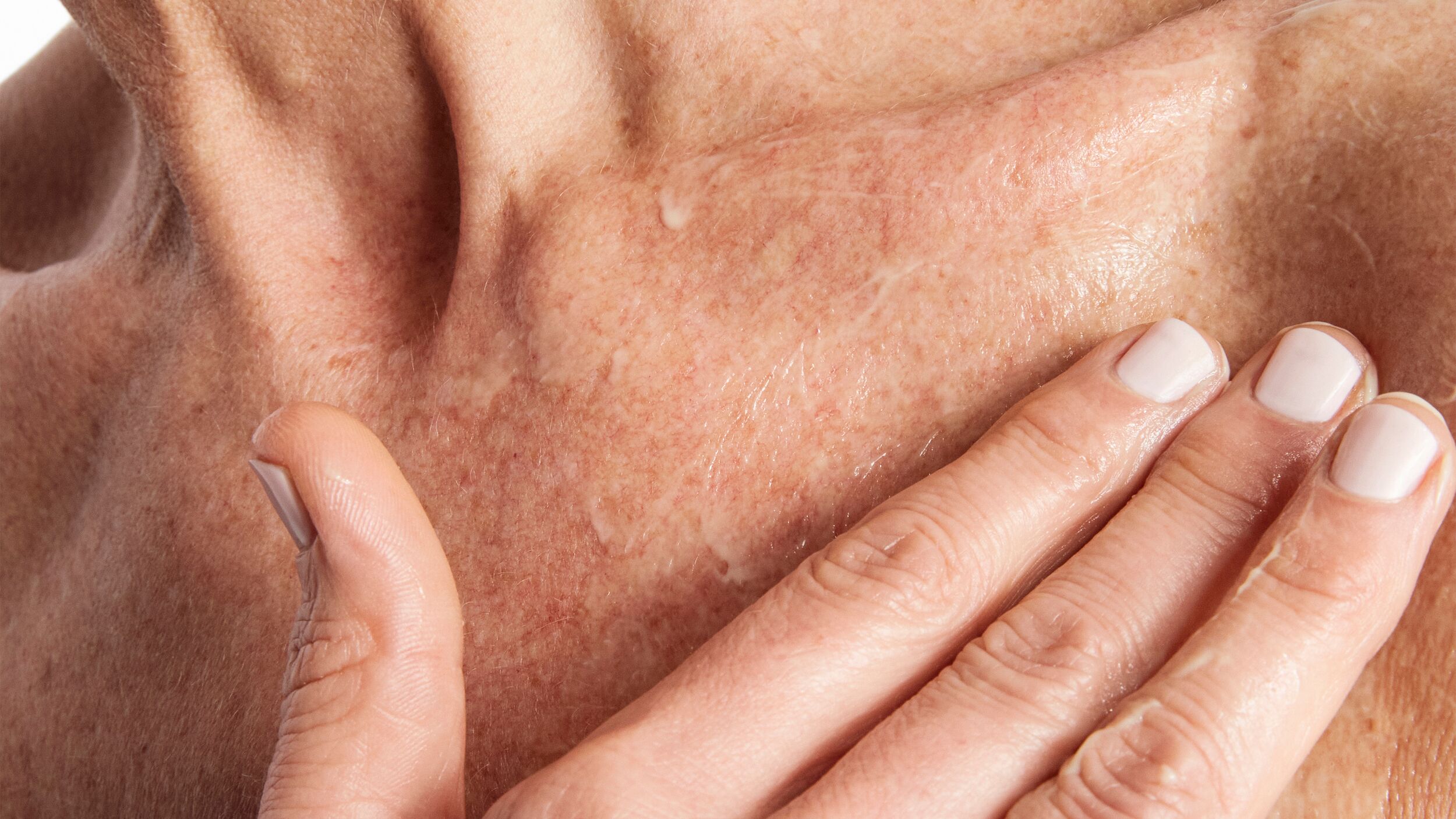
Whether you're a seasoned skincare pro or just beginning to dabble in the world of glow-enhancing serums and luxe moisturisers, one thing's for sure - starting a new skincare routine or adding a fresh product to the mix can be exciting (think: your skin but glowier). It can be tempting to dive in headfirst, but there’s an essential, often overlooked step that every skincare routine needs: patch testing.
It might not sound like the most glamorous step but it’s the key to establishing the best skincare routine for your skin. There are also certain ingredients to approach with caution if you have very sensitive skin, as well as ingredients that you can be sure won't cause flair ups. Here’s everything you need to know to set yourself up for skincare success…
What is Patch Testing, and Why Do You Need to Do It?
Patch testing is a simple but important step that helps you see how your skin will react to a new product. Even the gentlest, best-formulated products can cause a reaction on some skin types, and reactions can vary from mild redness to itchy bumps and dryness. By patch testing, you’re giving yourself a sneak peek of how your skin will respond, which is especially important if you’re using multiple products in a routine or have sensitive skin.
How to Patch Test Like a Pro
Pick a Spot: Choose a small area of skin, like the inner part of your forearm or behind your ear. These spots are ideal because they’re not super visible if a reaction does happen, and they mimic the skin sensitivity of your face.
Apply the Product: Use a tiny bit of the new product in your chosen spot and gently rub it in.
Wait It Out: Leave it on for 24 hours and check for any signs of a reaction - this could include redness, itching, dryness, or a burning sensation. If all’s clear after 24 hours, your skin has given it the green light. But if any irritation pops up, it’s a sign to reconsider how (or if) you should add it to your routine.
One New Product at a Time: We know it’s tempting to dive into a full new routine, but patience is key. Try introducing just one product per week.
Signs to Look Out For
Here’s a mini cheat sheet of what different reactions can mean and what to do if they appear:
Dryness/Peeling: This can happen with Retinoids, exfoliating acids, or any product that increases cell turnover. Try using the product less frequently (every other night) until your skin adjusts.
Redness or Mild Itching: This might mean your skin’s barrier is sensitive to something in the product. Look for ingredients like alcohol or fragrance, which can sometimes be irritating.
Bumps or Swelling: This is usually a sign that the product isn’t for you. Don’t ignore it! Discontinue and reach out to our Member Happiness team to discuss what could be triggering it as well as alternatives to try.
How to Build a Routine with Confidence
The key to building a routine you’ll love (and that your skin will love too) is to introduce products in a way that lets you understand each one’s effect on your skin. Here’s a sample plan to follow:
Week 1: Start with a gentle cleanser to clear away impurities without stripping your skin. Observe how it feels—smooth, soft, no tightness? Perfect.
Week 2: Add a serum to tackle a specific skin goal (think hydration, brightening, or anti-ageing). Use it once every other day at first, then build up if all goes well.
Week 3: Incorporate a moisturiser to lock in hydration and strengthen your skin barrier. Moisturisers are typically gentle but still build up slowly.
Week 4: Now it’s time for extras like exfoliants or treatments. If you’re adding something like an exfoliating toner, start with once a week and increase to two times a week as your skin tolerates.
For very sensitive skin, it’s important to go easy with potent ingredients like Retinoids, Vitamin C, Salicylic Acid, and Alpha Hydroxy Acids (such as Glycolic or Lactic Acid). Though these are beneficial for most skin types, starting with milder concentrations and applying them every other day can help minimise irritation. After a few weeks of smooth results, you might experiment with slightly stronger formulations, but be sure to add only one new product to your routine at a time.
When in Doubt, Call for Backup
If a product causes a reaction, don’t panic! Cleanse your skin gently to remove it and avoid any harsh treatments for a couple of days. Go back to basics - hydrating, soothing products only. If you’re not sure what’s causing the reaction or how to proceed, reach out to us. Our Member Happiness team is here to help guide you through it and make sure you get the most from your routine.
We’re big believers that everyone deserves access to high-end skincare without the crazy price tags, and with the right steps, you can avoid mishaps and enjoy ALL the glow.


